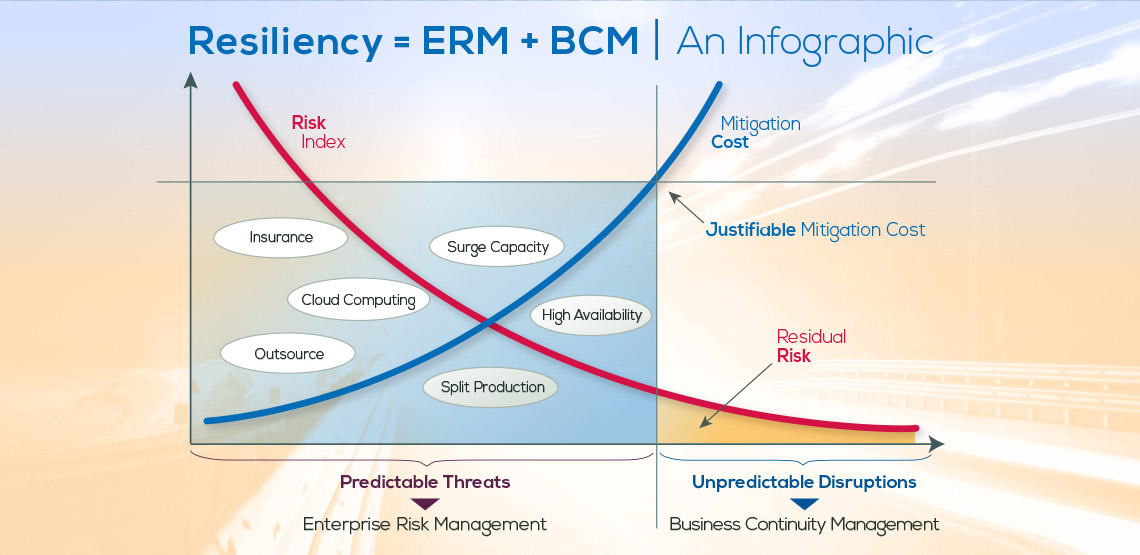News travel fast.
“Going to Africa. Hope I don’t get AIDS. Just kidding. I’m white!”
All it took was this one tweet from Justine Sacco, senior director of corporate communications at IAC to her then 170 Twitter followers. Within a matter of minutes, while she was asleep in the plane, Justine became the No.1 worldwide trend on Twitter – not for a good reason as you can imagine.
Response times for organizations are shrinking in our interconnected world. Senior executives expect faster responses to any form of disruptions.
Justine’s employer tweeted “This is an outrageous, offensive comment. Employee in question currently unreachable on an intl flight.”
Protecting the organization’s reputation, overseeing global supply chains, and monitoring weather in different parts of the world, have become crucial in keeping organizations resilient. As we evolve as a society, so do our businesses as well as the threats and risks we face.
How do you ensure that you are able to respond effectively to unexpected disruptions and meet your business recovery objectives? In other words: Are you resilient enough to bounce back to your Business As Usual state?
Many organizations believe that they’re well prepared for any disruption because they have their Business Continuity Plan on their shelf in a three-ring binder as a 300-page document. When in reality, if there’s an incident or crisis, the manager wouldn’t have the luxury of time to go through the entire document then make an effective response.
In March 2000, a lightning caused a fire in one of Philips plant in New Mexico. The company expected to resume production within a week. When two of Philip’s largest phone manufacturing customers – Sweden’s Ericson and Finland’s Nokia – were notified of the disruption, both companies had a different approach. Nokia’s supply chain Managers switched suppliers quickly, re-engineered some of its phones to accept American and Japanese chips. Meanwhile, Ericson took no action trusting that Philips plant would resume in a week. Result? Nokia’s profit jumped to 42% that year. Ericson suffered loss of US $400 m in annual earnings in addition to loss of market share.
There’s only so much risk or threats you can prepare organizations for through having a secured insurance, outsourcing or splitting production, etc. However, there are unpredictable disruptions known as the ‘residual risk’ that organizations should be mindful of to be resilient when those events occur.
To build a resilient enterprise, you need to have situational awareness, preparedness, and effective communications.
- Situational Awareness: Be aware events so you may be able to foresee potential disruptions that could impact your organization. This enables you to stay alert and react effectively. Ask yourself:
- What is happening around me now – in real time events? For example, from the weather to the Zika virus, Syrian refugee crisis, Britain’s vote to withdraw from the European Union or the drought in California – how would those types of events affect the nature of my business?
- Preparedness: You need to prepare to effectively respond. Once you have a plan and had a good trial run ahead of time, you should know the expected outcome of every step of the process and how long the recovery will take. To help you prepare, you need to understand:
- Your vulnerabilities
- Your points of failure
- Your current capabilities to find gaps in your organization
- Communicate Effectively: Communications is an important element of command and control. The last thing you want is to deal with irritated stakeholders who find out about the disruption through a Tweet or your competitors taking advantage of your vulnerability and somehow winning your customers. Be proactive and push the message that you want to convey through your communication channels.
Here’s what it can look like.
-
- Send Alerts: Through email, texting, website etc.
- Notify your staff of the event
- Document: CEOs will usually request a report on the incident
- Updates: Throughout the incident, keep updating the stakeholders and letting them know you are working to resolve the issue
- Collaboration: When group A has completed the task for recovery stage one, group A should inform group B to start the next stage and be of assistance to group B.
When you’re in the business world – you’re surrounded by risks, it’s inevitable. An organization’s ability to be resilient and to act effectively during a disruption is more important than ever given the speed of communication and the volatility of certain variables in business. Developing your organization’s capacity for ongoing situational awareness, preparedness and effective communication will affect how well you recover and how soon you can get back to business.











